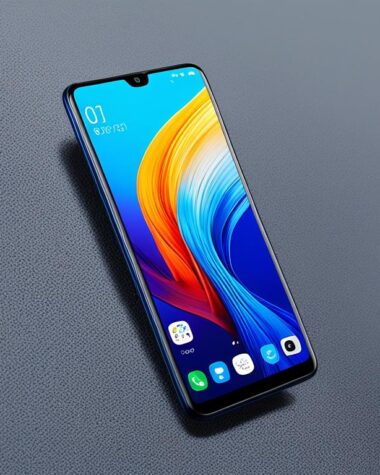Phone calls have long been a cornerstone of communication, allowing people to connect and converse regardless of their physical distance.
But have you ever wondered about the intricate technology that enables these conversations to happen?
In this article, we’ll delve into the fascinating world of phone call technology, exploring the evolution from analog to digital systems and the advancements that have revolutionized our communication capabilities.
The Era of Analog Phone Calls
Once upon a time, the landline telephone system ruled the communication landscape.
Picture this: a cozy living room with a rotary dial telephone sitting on a side table.
Making a call was as simple as picking up the receiver, dialing the desired number, and patiently waiting for the connection to establish.
Analog phone calls relied on a network of copper wires and central exchanges.
When you made a call, your voice was transformed into an analog signal, which traveled through the copper wires to reach its destination.
The recipient’s telephone would ring, and upon picking up, a connection was established, allowing both parties to engage in a conversation.
While analog phone calls served us well for decades, they had their limitations.
Mobility was a distant dream, as the telephone was firmly rooted to its wall socket.
Moreover, the analog signals were susceptible to interference and often suffered from quality degradation over long distances.
The Rise of Digital Phone Calls
As technology progressed, the world witnessed a shift from analog to digital systems, ushering in a new era of communication.
Digital switching systems emerged, integrating voice and data communication into a unified platform.
One of the key developments was the advent of Voice over Internet Protocol (VoIP).
With VoIP, making a phone call became as simple as dialing a number or using an app on your computer or smartphone.
The voice signals were converted into data packets and transmitted over the Internet Protocol (IP) network.
When you initiate a VoIP call, your voice is encoded into digital packets, which are then sent over the internet to reach the recipient’s device.
The data packets are decoded, allowing the recipient to hear your voice clearly.
This digital transmission revolutionized the way we communicate, offering improved call quality and reliability.
Digital phone calls brought a world of advantages.
They offered flexibility and mobility, freeing us from the confines of landline telephones.
Now, we could make calls from anywhere with an internet connection.
Furthermore, digital technology seamlessly integrated with other digital services, such as video calls, instant messaging, and file sharing, enhancing the overall communication experience.
The Mobile Revolution
While digital phone calls were making waves, another groundbreaking revolution was taking place in the realm of mobile communication.
The advent of cellular networks transformed the way we connect on the go.
Cellular networks operate through a network architecture consisting of base stations, cell towers, and mobile switching centers.
When you dial a number or select a contact on your mobile device, a series of events unfold.
Radio waves carry the signal between your device and the nearest cell tower, establishing a connection.
Mobile switching centers play a crucial role in call setup and routing.
They ensure that your call reaches the intended recipient, whether they are using a mobile device or a landline telephone.
Once the signal reaches the recipient’s device, the call is received, and the conversation can commence.
The evolution of mobile networks brought forth various generations of technology, from 1G to the current 5G.
Each generation brought advancements in data speed, capacity, and connectivity.
As a result, mobile phones have become indispensable tools for communication, offering an array of features beyond traditional voice calls, such as video calls, messaging apps, and internet access.
Additional Technologies and Features
In addition to the core technology behind phone calls, several other advancements and features have enhanced our communication experience.
Caller ID and Call Waiting: Caller ID displays the incoming caller’s information, allowing you to screen calls and prioritize your responses.
Call waiting, on the other hand, alerts you to an incoming call while you’re already engaged in a conversation.
Voicemail and Call Forwarding: Voicemail allows callers to leave messages when you’re unable to answer their calls.
Call forwarding enables you to redirect incoming calls to another number, ensuring you never miss an important call.
Conference Calls and Group Communication: With conference calls, multiple participants can join a single conversation, enabling seamless collaboration across distances.
Group communication platforms have further amplified this capability, allowing people to connect and communicate in real-time, no matter where they are.
Encryption and Security Measures: In an era where privacy and security are paramount, phone calls have not been left behind.
Encryption and other security measures ensure that your conversations remain confidential and protected from unauthorized access.
The Future of Phone Call Technology
As technology continues to evolve at a rapid pace, the future of phone call technology holds great promise.
We can expect further advancements in areas such as artificial intelligence, virtual reality, and augmented reality, which could transform the way we communicate over phone calls.
Imagine a world where AI-powered virtual assistants handle your calls, seamlessly transcribing and summarizing conversations.
Visual enhancements through augmented reality could enable richer communication experiences, where we can share and interact with visual content during phone calls.
Final Words on The Technology Behind Phone Calls
Phone calls have come a long way from the days of analog landline telephones.
The transition to digital technology and the rise of mobile networks have revolutionized communication, offering greater flexibility, mobility, and an array of features that enhance our connectedness.
As we look ahead, it’s clear that phone call technology will continue to evolve, pushing the boundaries of what we once thought possible.
So, the next time you pick up your phone to make a call, take a moment to appreciate the intricate technology behind it—the culmination of years of innovation that brings people together, no matter where they are.
We earlier discussed Titanic’s legacy as it represents a poignant reminder of a tragedy that shook the world.









1 comment